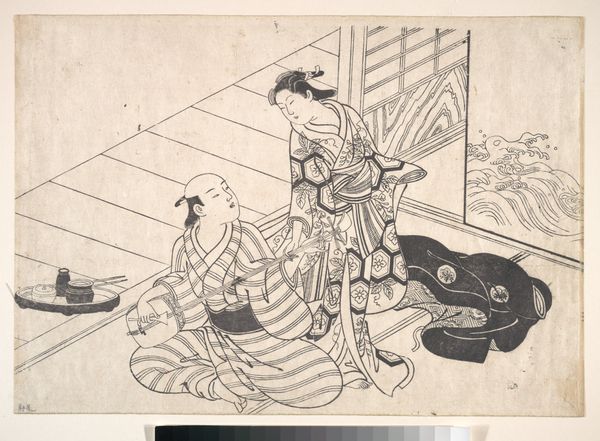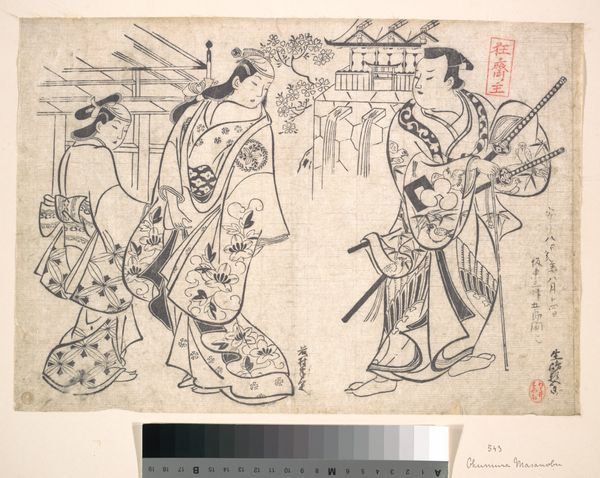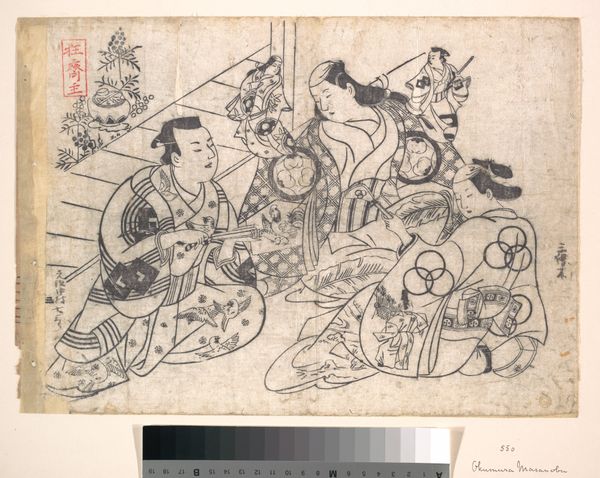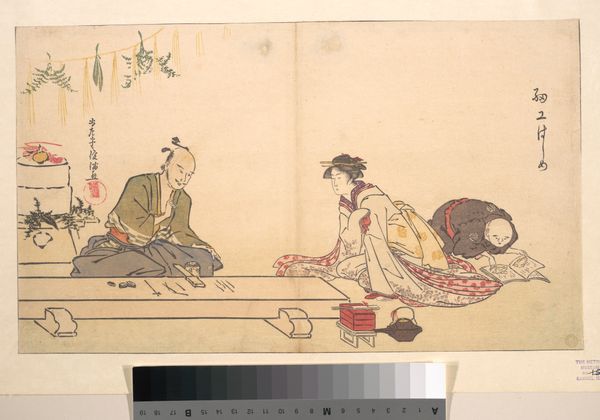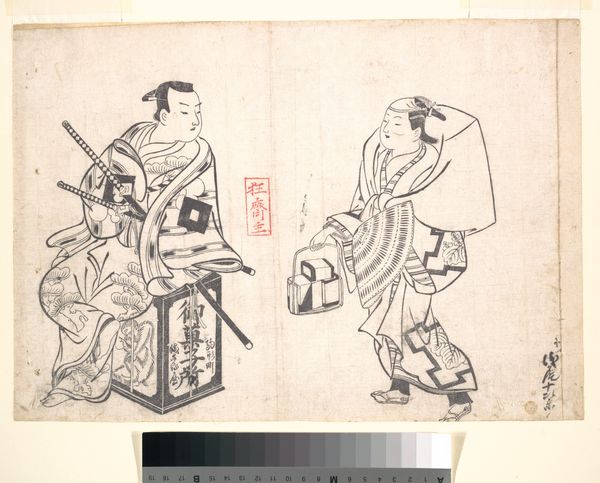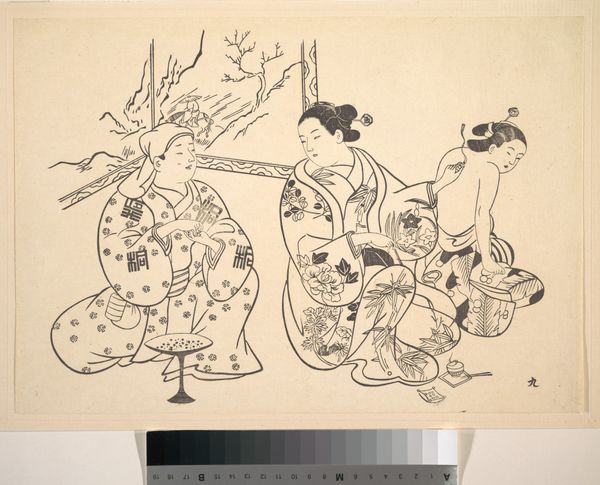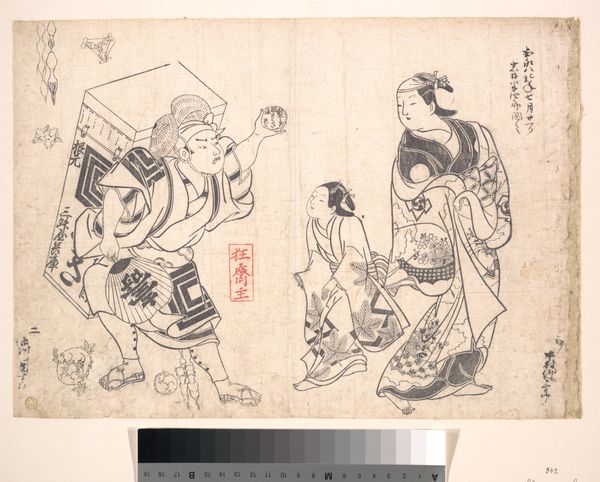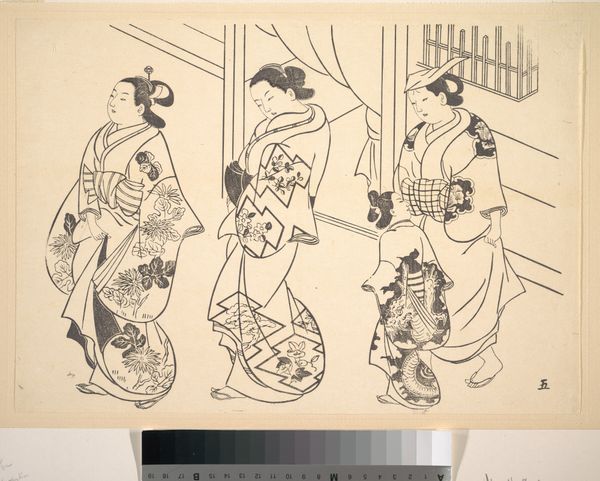
Dimensions: 10 1/4 x 14 11/16 in. (26 x 37.3 cm)
Copyright: Public Domain
Curator: This is “Two Women Seated in a Parlor,” an intriguing woodblock print created sometime between 1868 and 1912, believed to be the work of Okumura Masanobu. It’s part of the collection here at the Metropolitan Museum. Editor: My initial impression is one of quiet domesticity. There’s a calm and almost stoic feeling in the figures' rendering. The minimal linework, the subtle asymmetry in their postures... it feels incredibly intimate, even staged. Curator: Well, consider the historical context: genre scenes like this were popular amongst the burgeoning middle class during the late Edo and early Meiji periods. Prints such as these made depictions of daily life, entertainment, and fashion more accessible. Look at the detail in their kimonos—the textile production itself was undergoing transformations with new dyes and weaving techniques, influencing design aesthetics in wider society. Editor: Exactly, and the composition reinforces that accessibility. It’s almost like a photograph, capturing a fleeting moment, made readily available to be reproduced. Ukiyo-e prints like this facilitated the dissemination of social and aesthetic values across a wide audience. They helped normalize what it meant to live and exist in the world. Curator: You’ve picked up on the social dimension there. What’s compelling to me is thinking through the block printing process itself. Every line, every area of color required carving—demanding meticulous skill from artisans to replicate the artist’s vision faithfully, the means of production mirroring labor practices in other Japanese industries. The production of woodblock prints for the middle classes influenced the structure of workshops and artisan guilds, with publishers exerting financial and aesthetic control. Editor: I'm fascinated by how those prints helped create a shared visual language, solidifying cultural norms while perhaps subtly challenging the traditional elite. The Ukiyo-e movement democratized access to aesthetics, moving the creation and consumption of visual material from temple or court into city streets. The figures presented weren’t otherworldly or supernatural but immediate contemporaries. Curator: Absolutely. And examining these images helps to think critically about how identities, norms and artistic visions are produced and consumed, as prints themselves have moved from objects of everyday life to artifacts housed in museums. Editor: I agree completely. It is in examining material culture like this, the commodification of art and fashion that one finds unexpected windows into historical eras and processes.
Comments
No comments
Be the first to comment and join the conversation on the ultimate creative platform.
